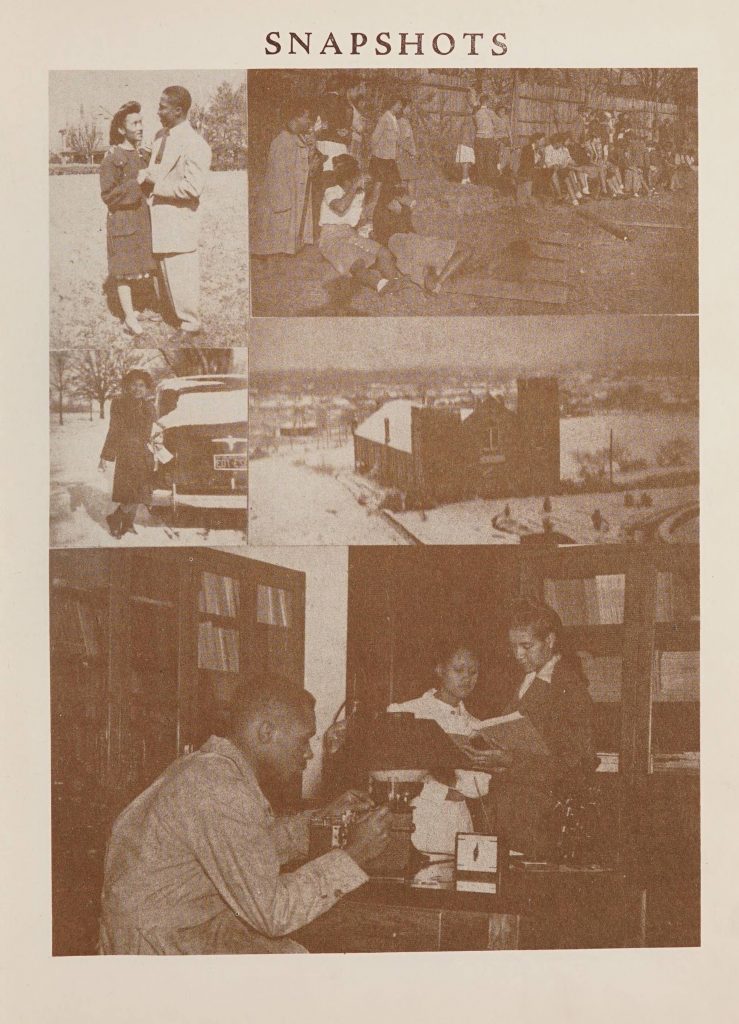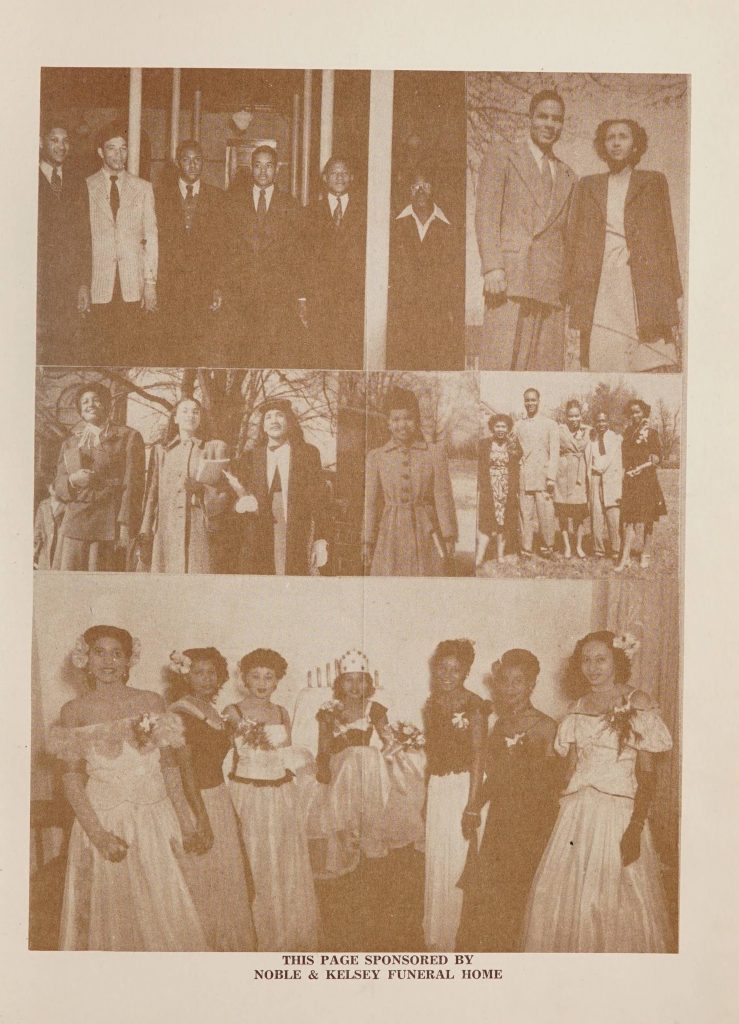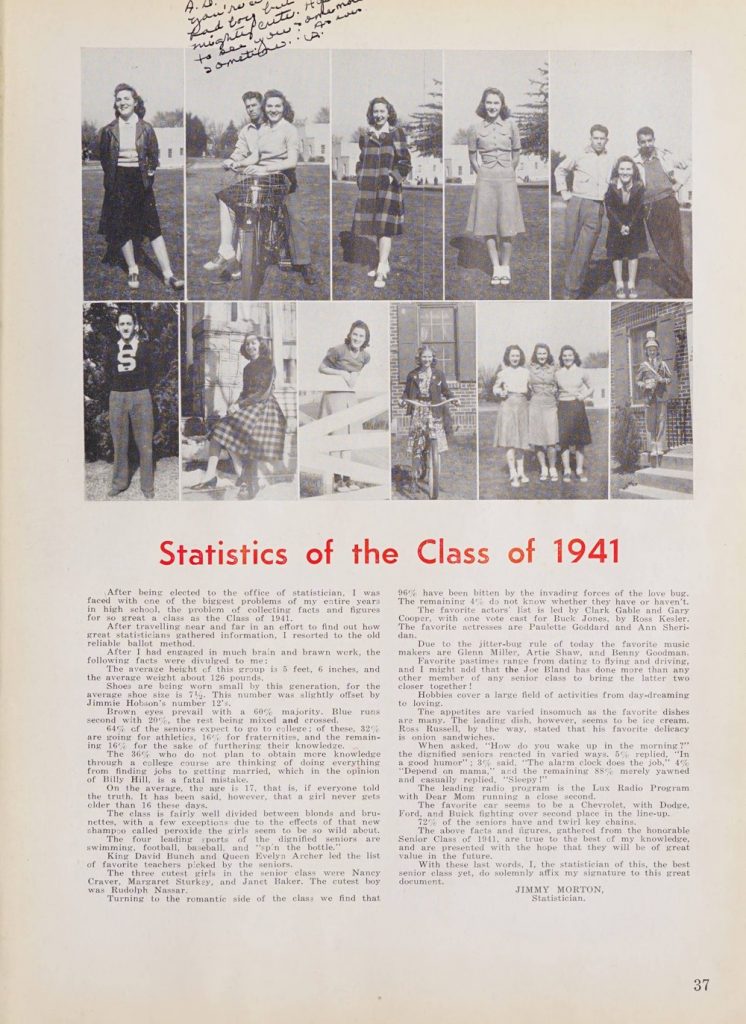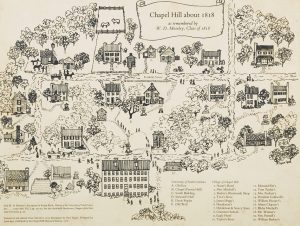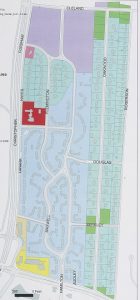Over 30 newspaper titles added to DigitalNC!

This week we have another 34 newspaper titles up on DigitalNC, including four from Carthage, North Carolina: Former home to the Tyson & Jones Buggy Company.
The “Jones” of the Tyson & Jones Buggy Company was William T. Jones, who was born into slavery and became one of the most well-respected and wealthiest businessmen in Carthage. Born near Elizabethtown in 1833, his father was a plantation owner and his mother was an enslaved person. Prior to the Civil War, he was given his freedom and moved to Fayetteville to work as a painter for a carriage company. It was there that his work was noticed by Thomas Tyson, who convinced him to come to Carthage to work for his fledgling operation in 1857, and by 1859 Jones was made a partner in that company. In 1861, Jones joined the Confederate Army and was subsequently captured by Union forces. While imprisoned at Fort Delaware, Jones began making moonshine from potato peelings and bread crusts and selling it to the Union guards. After Sherman’s March left much of the area devastated, it was the Jones’ moonshine money that allowed the Tyson & Jones Buggy Company to restart production, employing many struggling locals and helping to restart the local economy.
Even though Jones was a captain of industry, North Carolina House of Representatives candidate, and Sunday School teacher with a legacy that lives on in Carthage, it was not widely acknowledged that he wasn’t White. It wasn’t until recently that him being a Black man was recognized as fact and his full story was told.
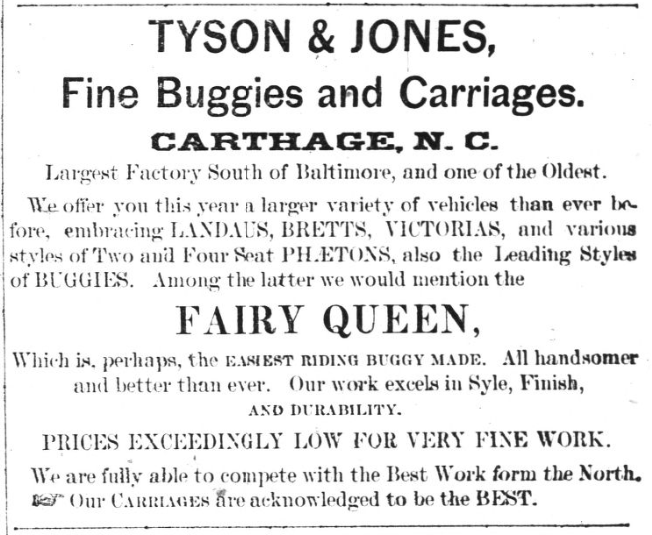
Over the next year, we’ll be adding millions of newspaper images to DigitalNC. These images were originally digitized a number of years ago in a partnership with Newspapers.com. That project focused on scanning microfilmed papers published before 1923 held by the North Carolina Collection in Wilson Special Collections Library. While you can currently search all of those pre-1923 issues on Newspapers.com, over the next year we will also make them available in our newspaper database as well. This will allow you to search that content alongside the 2 million pages already on our site – all completely open access and free to use.
This week’s additions include:
- The Central Times (Dunn, N.C.) – 1892-1894
- The Albemarle Chronicle (Albemarle, N.C.) – 1912
- The Chronicle (Albemarle, N.C.) – 1912-1915
- Daily Concord Standard (Concord, N.C.) – 1898-1899
- The Chatham Record (Pittsboro, N.C.) – 1899
- Moore Gazette (Carthage, N.C.) – 1881-1885
- The Carthaginian (Carthage, N.C.) – 1878
- Moore Index (Carthage, N.C.) – 1879-1880
- The Southern Protectionist (Carthage, N.C.) – 1888
- The Sampson Democrat (Clinton, N.C.) – 1920-1921
- The High Point Enterprise (High Point, N.C.) – 1893-1915
- Daily Enterprise (High Point, N.C.) – 1906-1908
- The Patriot and Times (Greensboro, N.C.) – 1869
- The Greensboro Patriot (Greensboro, N.C.) – 1869-1918
- Greensboro Patriot (Greensboro, N.C.) – 1880
- The Daily Evening Patriot (Greensboro, N.C.) – 1890
- The Watchman and Harbinger (Greensboro, N.C.) – 1863-1864
- The New North State (Greensboro, N.C.) – 1878
- The North State (Greensboro, N.C.) – 1878-1885
- The Beacon (Greensboro, N.C.) – 1880
- The Rowan Record (China Grove, N.C.) – 1909-1919
- China Grove Record (Salisbury, N.C.) – 1920-1925
- Jackson County Journal (Sylva, N.C.) – 1913-1919
- The Ansonian (Wadesboro, N.C.) – 1907-1908
- The Pender Chronicle (Burgaw, N.C.) – 1912-1943
- Harnett County News (Lillington, N.C.) – 1919-1922
- Goldsboro’ News (Goldsboro, N.C.) – 1867-1873
- Goldsboro Daily Messenger (Goldsboro, N.C.) – 1869
- Goldsboro Daily Argus (Goldsboro, N.C.) – 1911
- The Evening Review (Wilmington, N.C.) – 1875-1877
- The Morning Star (Wilmington, N.C.) – 1881
- The Tribune (Henderson, N.C.) – 1873-1876
- The Henderson Pioneer (Hendersonville, N.C.) – 1866-1867
- The Daily Herald (Hendersonville, N.C.) – 1911-1912
If you want to see all of the newspapers we have available on DigitalNC, you can find them here. Thanks to UNC-Chapel Hill Libraries for permission to and support for adding all of this content as well as the content to come. We also thank the North Caroliniana Society for providing funding to support staff working on this project.
